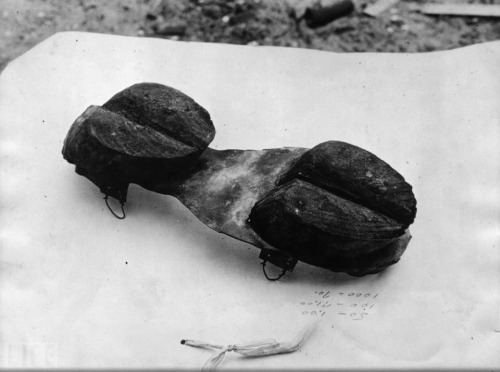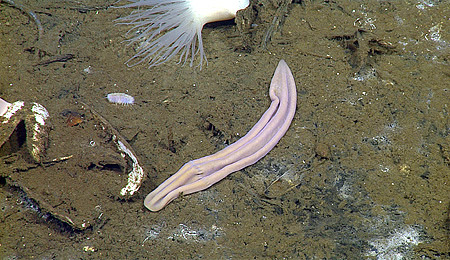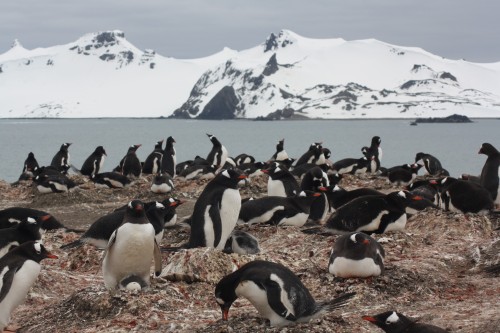147 posts
Latest Posts by allaintoin - Page 3



In the next century, some of our descendants will be living permanently on the Moon and Mars executing almost similar everyday activities as their relations on Earth do. If you are still in doubt of humans living outside the Earth, always remember that space agencies are already putting in the effort to enable our civilization attain such a milestone before the end of this century. Here's how Lunar Gateway will enable space agencies to achieve moon and mars colonization in this century.
Image Credit: https://pin.it/sD2Nsro


During alcohol prohibition, the brewing and transportation was prohibited. Moonshiners often brewed their moonshine in the middle of forests or meadows as to avoid detection. These “cow shoes” were often worn by moonshiners as to disguise their footprints. The idea behind this invention was that if law enforcement saw shoe prints in a forest or meadow they would think nothing of it and not investigate.

French PDO cheese map.





SOCEMA Grégoire, 1952. An experimental gas turbine-powered, highly aerodynamic coupé created by French automobile engineer Jean-Albert Gregoire. Powered by a single rotor kerosene-fuelled ‘cematurbo’ engine developing 100 bhp at a 25,000 rpm. The lightweight aluminium frame and bodywork and the aerodynamic shape – a Cx of just 0.19 – enabled a 200km/h top speed which placed it among the fastest cars on the planet in 1952. The project went no further than a single prototype due to the high cost of construction and braking issues; a gas turbine doesn't generate any engine braking effect upon deceleration.
photographs by Perico001 on Flickr

Viktor Tsoi with a painting of himself (1986)
paiting by Timur Novikov

Arturo Pacheco Altamirano - Boca de Buenos Aires (1955)
Our most recent addition to the deep-sea-animals-you've-never-heard-of collection—a pelagic ribbon worm, Phallonemertes sp.
Nemerteans are neither worms nor fish, although they look a bit like both. They are unique enough to belong in their own phylum. Most nemerteans burrow in sediments or between crevices in rocks, shells, and other seafloor habitats, but some, like this one, live in the open ocean, never touching the seafloor.
Nemerteans range in length from a few millimeters to 30 meters stretched (nearly 100 feet) in length (most species commonly measure about 20 centimeters, just about eight inches, or less).
More of Lewis Hine's groundbreaking photos of child labor in the early 20th century.
These 11-year-old “pin boys” worked until midnight many days of the week resetting the pins at a Massachusetts bowling alley:

And here’s ten-year-old Charlie Foster, who could not read or write, getting ready to work in an Alabama cotton mill:

{WHF} {Ko-Fi} {Medium}


Ok y’all brace yourselves cuz I just learned about a new animal

Yes, that is an animal. Yes, scientists refer to it as the purple sock worm. No, that’s not it’s real name, silly, it’s real name is Xenoturbella!
When these deep-sea socks were first discovered, no one knew what the fuck they were looking at (and, really, can you blame them?). They have no eyes, brains, or digestive tracts. They are literally just a bag of wet slop. DNA analysis initially seemed to indicate that they were related to mollusks, until the scientists realized that DNA sample was from the clams they had recently eaten (yes, they can eat with no organs. We don’t know how.)
Scientists then analyzed the data again and tentatively placed them in the group that includes acorn worms, saying that their ancestors probably had eyes, brains, and organs, but simplified as a response to their deep sea ecosystems.
Later DNA testing has since shown that they are their own thing! Xenoturbella, along with another simple and problematic to place creature called acoelomorphs, belong to their own phylum called Xenacelomorpha! This places them as the sister group to all bilateral animals. So, they just never evolved brains, eyes, or organs. They are a glimpse at a very primitive form of animal that never bothered to change, because apparently what they do works. Rock on, purple sock worm.

This is the most clearest picture of Pluto ever taken! It was captured recently by the New Horizons planetary probe using itd Ralph imaging instrument. The surface of the dwarf planet is a cool -400 degrees. From this angle it looks like Europa, one of the moons of Jupiter. The red could be copper, the blue could be copper sulphate or cobalt. We will find out more as we explore this dwarf planet on the farthest side of our Solar System even further over the next decade or so. Learn more about the dwarf planets in the Kupier belt region from here
Image: NASA
THREE NEW SHARK SPECIES THIS WEEK!
The second week of July 2023 something extraordinarily beautiful happened, the findings of 3 new species of sharks for were announced
A new angel sharks species was identified, from the western Indian Ocean on the Mascarene Plateau and off southwestern India in 100–500 m depths, the Lea’s angel shark Squatina leae, was recognized to be different genetically and morphologically distinct from its congeneric species Squatina africanae, following unique morphological features. This species was first detected in 1988 after finding three unusual, small sharks, but till today was completely understood. The angel shark is named after one of the author’s fiancee’s late sister, Lea-Marie Cordt.

- Squatina leae, adult male, in dorsolateral.
Angel sharks are “flatter sharks”, possesing distinctly broad, dorsoventrally flattened bodies, a short snout with large mouth and nostrils, eyes on top of the head close to the large spiracles, very large pectoral fins, and a lateral caudal keel. They’ve evolved to be ambush predators, they lie in wait for prey to pass closely overhead before attacking.
Reference (Open Access): Weigmann et al., 2023. Revision of the Western Indian Ocean Angel Sharks, Genus Squatina (Squatiniformes, Squatinidae), with Description of a New Species and Redescription of the African Angel Shark Squatina africana Regan, 1908. Biology
From North Australia, another species of hornshark is described based on six whole specimens and a single egg case. The painted hornshark Heterodontus marshallae was previously considered to be the same with the zebra bullhead shark another well know bullhead shark from the central Indo-Pacific from Japan to Australia, but genetic and morphological analyses indicated the sharks were different, but looking alike. The painted hornshark is endemic to northwestern Australia and occurs in deeper waters, at 125–229 m below surface.

- Lateral view of two mature female painted hornshark Heterodontus marshallae showing small differences between individuals
The painted hornsharks is named in honour of Dr. Lindsay Marshall www.stickfigurefish.com.au a scientific illustrator and elasmobranch scientist who expertly painted all the sharks and rays of the world for the Chondrichthyan Tree of Life Project.
Reference (Open Access): White et al., 2023 Species in Disguise: A New Species of Hornshark from Northern Australia (Heterodontiformes: Heterodontidae). Diversity.
And from an unidentified shark egg collected from the deep waters of northwestern Australia, in 2011 recently helped researchers identify a new species of deep water cat shark. Called ridged-egg catshark Apristurus ovicorrugatus after its eggs, it was collected in the earlys 90 but remained unknown to date. This sharks presents white eyes, and is small in size, reaching less than a half meter in length. .

- Lateral view of female Apristurus ovicorrugatus before preserved. Photo by CSIRO.
Egg cases belonging to this species had been documented as early as the 1980s, but could not be matched to any species of Australian shark until recently scientists examined a shark specimen of previously uncertain identity in the CSIRO collection.

-egg cases of Apristurus ovicorrugatus. Scale bar is 10 mm
Reference (Open Access) White,et al., 2023 What came first, the shark or the egg? Discovery of a new species of deepwater shark by investigation of egg case morphology. Journal of Fish Biology.



PENGUINS ARE EATING MICROPLASTIC IN THE ANTARCTICA
Microplastics are widespread in the marine environment but are still poorly understood in Polar regions, particularly in the Antarctica. Now, an international study reveals the presence of microplastics in three penguin species from Antarctica and warns about the state of our southern ecosystems.
Now, an international study reveals the presence of microplastics across Antarctica, in three penguin species, chinstrap, gentoo and adélie penguins, and warns about the state of our southern ecosystems.
Researchers analyzed scat samples from chinstrap, gentoo and adélie penguins at breeding colonies across the Antarctic Peninsula and Scotia Sea, over seven seasons. They found microplastics are widespread across years and colonies in Antarctic Peninsula. These particles are mostly polyethylene and polyester, but also, in cellulose fibres. Results shows a similar frequency of occurrence of particles across all colonies, suggesting there is no particular point source for microplastic pollution in the Scotia Sea,
Researchers highlight the need for further assessment of microplastics in this sensitive region of the planet, the potential effects on penguins and other organisms in the Antarctic marine food web.
Photo: Gentoo penguin at Byers Peninsula, one of the locations included in the study. Photo by Andrés Barbosa (MNCN-CSIC)
Reference: Fragão et al., 2021. Microplastics and other anthropogenic particles in Antarctica: Using penguins as biological samplers. Science of The Total Environment.
Photo description: Gentoo penguin colony, with nearly 40 penguins, some of them are nesting in a free-ice area near the water.
Happy babies
(via)
Our newest unofficial video series—deep-sea animals that are cuter than your puppy. 🐶
Amphipods are often mistaken for tiny shrimp. They resemble shrimp in some ways, but are laterally compressed and have no carapace. They’re important food for many fishes, invertebrates, seabirds, and even marine mammals. Amphipods are mostly detritivores (eating decomposing plant and animal parts, as well as feces) and scavengers. Amphipods in the genus Scina, like the cutie in this video clip, can emit their own light (bioluminescence). Researchers have recorded this light and found that it is among the shortest wavelengths of light produced by any known organism!

Lieutenant governor of Virginia ,Winsome Sears

There are many nebulas, galaxies, stars, and planets that researchers are interested in, so it’s important for the James Webb Space Telescope to operate efficiently and for data to be easily accessible.
Over the first year of its observations, engineers behind Webb established the groundwork for how Webb conducts its operations week to week. This is so that, as Webb travels from one point to the next, it will stop at each proposed target in between to maximize the amount of science done. As these targets are observed, that data needs to be archived for future study.
Data from these observations are available via the Mikulski Archive for Space Telescopes (MAST). The Cartwheel Galaxy is an example of what one might find in these archives for study in greater detail.Learn more about how Webb data reaches Earth: https://bit.ly/3L8XDYg

Milkmaids of Komintern kolkhoz do a crossword puzzle. Photo by Vsevolod Tarasevich (Tambov oblast, 1957).
Soundtrack:








30 amazing vintage photos from the set of “The Good, the Bad and the Ugly” (1966).
Slow your scroll and float with us 〰️
This extraordinary deep-sea resident is Avocettina bowersii, also known as a snipe eel. The snipe eels in the family Nemichthyidae have thin, tweezer-like jaws that bend outwards. It was long debated how these fishes eat, but we now know that their tiny, backward-facing teeth, almost like velcro, allow them to capture small crustaceans and bring the prey into their mouths with a series of quick chomps.
Snipe eels can be found at depths between 92 and 641 meters (300 and 2,100 feet) and measure about one to two meters (three to five feet) in length.
Blood-belly comb jelly my beloved ❤️ 🩸








Meet Lampocteis cruentiventer, the bloodybelly comb jelly. This deep sea ctenophore was first collected in the Pacific Ocean off the coast of San Diego, California, in 1979.
Scientists believe the bloody-belly's red belly helps mask bioluminescent light from the prey it consumes. A predator with a glowing gut could easily become prey.
The genus name Lampocteis derives from the Greek roots for “brilliant comb,” referring to the bright iridescence diffracted from the animal’s comb rows.
Love to sea it 🌊


The Space Shuttle Atlantis seen in silhouette during solar transit, May 12, 2009.
(NASA)

The school of the future in the postcard series “En l'an 2000,“ issued in Paris, 1910. (GallicaBnF)